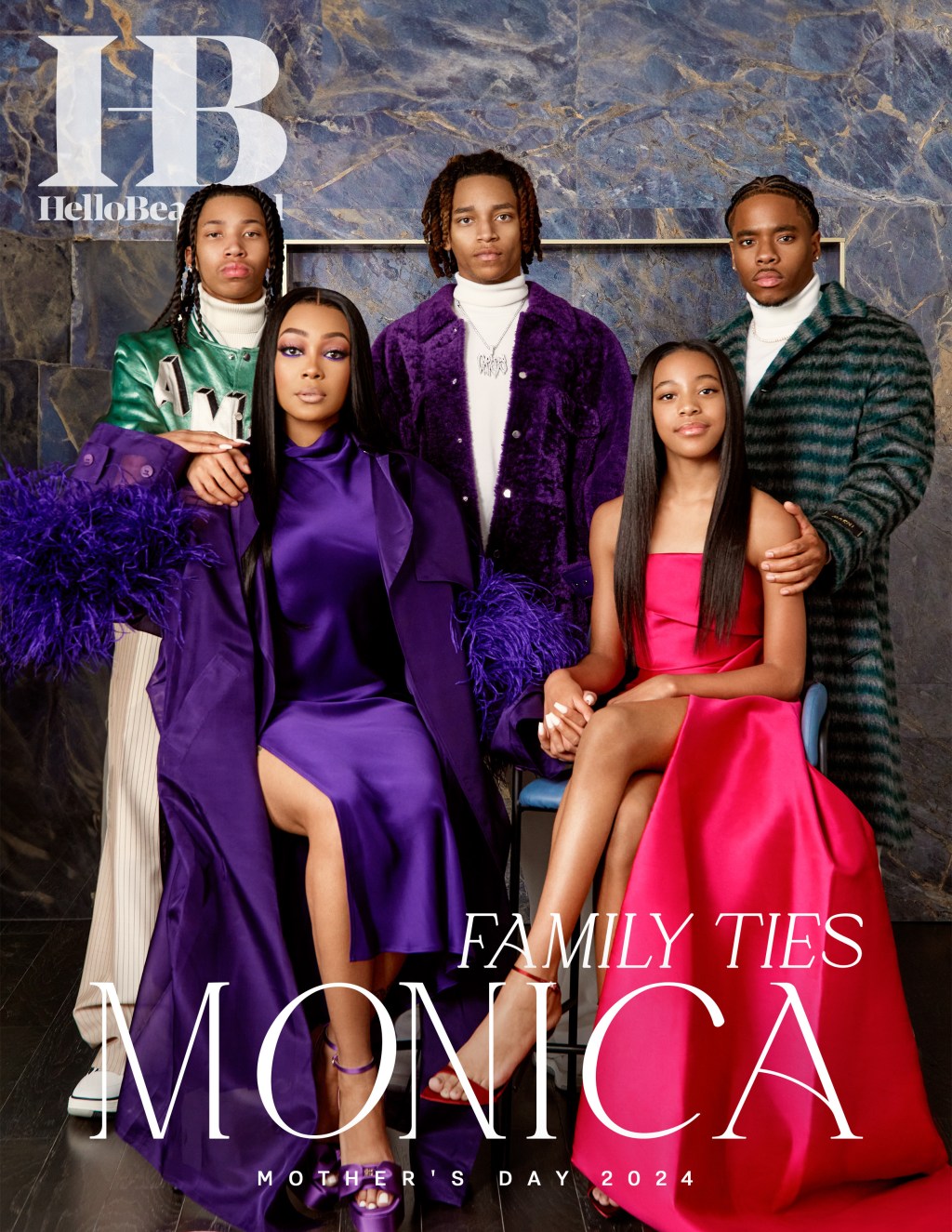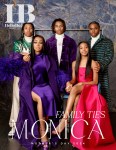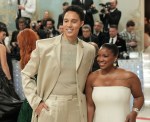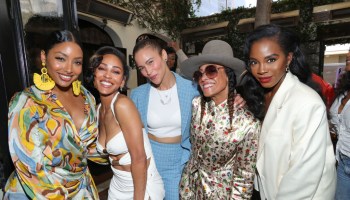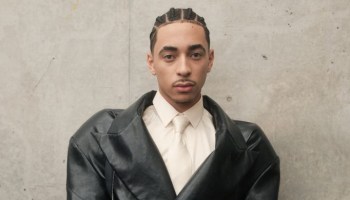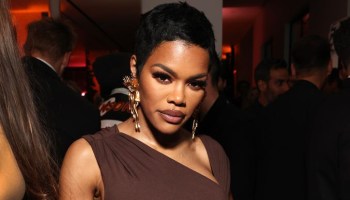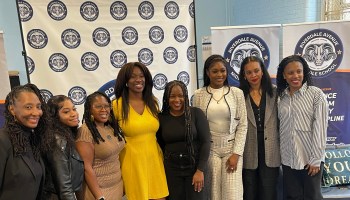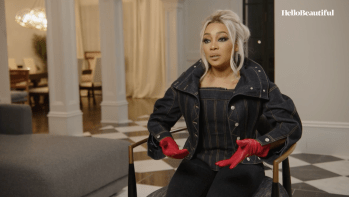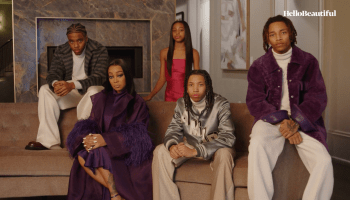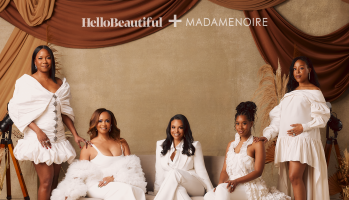You’ve got questions? He’s got answers! Need advice?
Send your questions to Terrance: girlworkonyou@aol.com
Hooray! Today is, “Read A Book” Thursday and I want to thank all of you for making the first week a huge success! And, congratulations to all the lucky ladies who won autographed copies of last week’s featured author, Donna Hill.
Today, I am proud to introduce a special lady, and certified DIVA! Meet best-selling author, Deborah Gregory. She is the author-creator-producer of “The Cheetah Girls” phenomenon. However, for Gregory, a best-selling author and award-winning writer who had contributed to Essence, Redbook, Entertainment Weekly, Vibe and More, survival was crucial. Homeless on the sidewalks of Brooklyn at age three with her single mother and two sisters, Gregory was separated from her family and became a ward of the State. She spent her childhood in the New York City foster care system under ACS until she aged out of the system at 18. Upon becoming a journalist—as a fashion and beauty writer for Essence magazine– in 1990 she spent a large portion of her career searching for the mother who was committed to a psychiatric institution in Long Island and piecing together the puzzle of her early years and a painful family legacy. She channeled her pain into writing, creating diverse characters that would empower and unite tween and teen girls across the country. That energy became, “The Cheetah Girls” tween series.
“The Cheetah Girls” unprecedented franchise success for the Disney Channel began with the airing of the first Cheetah Girls movie in 2003. Within two years of the movie’s debut, the fictional group gained a staggering global fan base, topped the soundtrack charts with a double-platinum soundtrack and enjoyed a highly-rated DVD release. In 2006, “The Cheetah Girls 2” made its debut and was the #1 basic cable movie that year among kids 6-11 and tweens 9-14.
Now, Deborah has released the second feline-fabbie book of her purrlicious sophomore series, CATWALK (Delacorte Press; $8.99). CATWALK: STRIKE A POSE has pounced onto bookshelves nationwide.
CATWALK: STRIKE A POSE will continue the competitive yet fashionable journey of feline fatale characters Pashmina Purrstein and her fierce friends—Angora, Felinez and Aphro—who are anxious to rise above the runway ramps. The fashion frenzy ensues after these chic cohorts spend all fall assembling the ultimate fashion show team to compete in the 35th annual Catwalk competition at global-groovy Fashion International High School located in the Big Apple, the fashion cap of el mundo. Each year, five competing houses compete in the annual Catwalk competition for the chance of a lifetime: to snag the shot at staging their show abroad and the $100,000 grand prize.
For the first time in the competition’s history, the contestants every move will be documented for the Teen Style Network’s reality show, “Catwalk: Strike A Pose,” which begins airing the following spring. The pressure causes a few seams to come undone—including the reality that someone is sabotaging the chic team’s every move until they discover there is a real-life spy in their midst threatening to unravel their chance at fashion stardom.
“Romance Writer Donna Hill Steams Up Pages In New Book”
The oh-so-fabulous and down-to-earth Deborah chatted with me about her writing, life, and successes.
TD: What inspired you to start writing?
DB: It is only recently that I think I really comprehend what tethered me to writing. My first foster mother was illiterate–completely. I practically grew up there–since I was placed in her home at the age of 4. She did not tell us, but we all knew that she couldn’t read or write, even though she kept it a secret and pretended she could (“I don’t have my glasses, read this letter for me,” etc.) Anyway, my purpose was to read and write for her. She had lots of relatives and I would read the letters they sent and write the letters she would send to them, for example. So although I didn’t realize it, early on I learned my purpose was to write. I think what inspired me to actually start writing for myself–meaning poems, and the novel I began at age 11 was that I had limited means of access to anything. I wasn’t allowed to do anything–like ride bicycles, skate, play with other kids. We had to spend a lot of time in the basement, when we weren’t in school, so writing became my escape and any books I could get I could read. I didn’t mention, but my foster mother did not like me reading, so I had to sneak reading the books.
TD: How did you come up with the concept for your best-selling series, “Cheetah Girls?”
DB: One of the other forms of escape I developed early on was sewing and making clothes. So I would fantasize that I was a singer onstage. That type of stuff–making outfits for myself, and singing in the mirror. No, I cannot sing, so it was all a fantasy–a way of escaping from all the pain, confusion, trauma that I experienced growing up in foster care. The animal print theme was my thing. I really dig the spots, you know–it’s like my calling card. Hola, everyone–I’m entering the room in my digable spots, so just let me pounce on my platform, okay :). My initial writing career began as a magazine writer–mainly for Essence magazine. I began as a freelance fashion and beauty writer–yet I worked in the office five days a week–what is often referred to as “permalancing.” As I evolved, I wrote entertainment stories, and I wrote lots of articles on singers and girl groups–for other magazines, too, including US magazine, EW, Seventeen, and Vibe magazine. I adore girl groups–you have this insular structure of three or four girls who will go through everything together–work, rehearse, shop, share secrets, endure growing pains both personally and professionally. I guess to me it’s sort of like a family structure of siblings. Something I would so love and appreciate on many levels. That’s what I wanted to create with the Cheetah Girls–that’s why I made them friends in the first place, and that they would make their dream come true–together. That’s the impetus for the creation of The Cheetah Girls.
TD: How did you end up with a television, film, and music franchise with “Cheetah Girls?”
DB: From jump street, my idea was to make it a multi-platform structure, very synergistic. I partially derived the idea from my journalism background–as I mentioned, I wrote hundreds of articles on singers, girl groups (one of my favorite books I read when I was researching girl groups as a journalist in the nineties was called, “Girl Groups: Story of A Sound”). And I was watching a VH1 show called, “Where Are They Now” and David Cassidy was the subject of this particular episode. He was part of “The Partridge Family.” I learned from watching this episode ( I had never actually seen “The Partridge Family”) that he wasn’t really a Partridge. I didn’t know they weren’t really a family (tee hee:) and I really dug that idea–this fake family singing group has a show, tours, concerts, and have albums–so there you have it. That’s what I wanted with The Cheetah Girls. It was merely the right thing to do to start it as a book series because literacy means a lot to me–for the reasons I discussed earlier (my foster mother was illiterate). Of course, given our pop culture obssession, music and television are bigger components of the entertainment landscape than books are now (which causes me great sadness), so those components did grow bigger–exploded actually. It’s a very natural process to turn books into film or television projects–so since the characters practically jumped off the page visually–it was a natural to proceed to next level–which was the Disney Channel since they serviced the target age group (the tween and early teen market). The Disney Channel optioned the book rights to The Cheetah Girls book series. Then it grew from there. Disney have their own record company, merchandising, concert tour setup–so they will expand things to each of these divisions if a project merits that in terms of popularity–and so that is what happened with The Cheetah Girls.
TD: Were you surprised by the success of the series, “Cheetah Girls?”
DB: That it had mainstream acceptance–yes. I knew from day one–and still know–with projects that have black and latin characters you may only get to service mainly that market. I expect that. It is not a level playing field. That is the reality in the year 2010. Maybe in the year 3000 we will be living in a different world. So, you do the best you can. Despite what anyone says, you never know how any project is going to be accepted. But, one thing is for sure–white film, tv projects make the most amount of money. So, you go as far as you can with black projects–and every now and then you have something as successful as Precious, The Color Purple, or The Cosby Show, or The Cheetah Girls, or That’s So Raven–but they still never make or go as far internationally as white projects do in terms of actual revenues grossed worldwide in every aspect of their exploitations. And books especially–by black authors–are still a struggle for the most part. The book industry itself is experiencing reduced revenues–period–partly because of the recession and partly because most people watch television more than they read.
TD: This series, “The Catwalk,” is another teen girl franchise. What prompted you to do another series?
DB: I really want to continue writing my adult novel–the one I began before The Cheetah Girls but put aside, but I honestly wasn’t ready to deal with it yet. So I created another tween teen book series–formulating the ideas from my fashion background (I graduated from Fashion Institute of Technology and made clothes and had an adorable plus size boutique–which is how I met the fashion editor of Essence who used to borrow clothes from my store for editorial shoots. I badgered her about writing–and eventually they hired me as the freelance fashion and beauty writer). This whole thing with fashion reality shows took off–Project Runway and America’s Next Top Model–so I thought that would be quite furbulous to have a fashion show competition in a prestigious fashion high school for aspiring fashionistas–models, fashion and accessory designers, illustrators, photographers. So in the CATWALK book series (Delacorte Press) you have five competing teams–which are called “houses” in the tradition of haute couture who will compete in the annual Catwalk Competition. Each house (team) has approximately 30 members and one house leader–everything you need to put on a real fashion show–the models, the designers, the producer, the makeup artists, the hairstylists, lighting designer, and music supervisor. At the end of the school year, the members of the winning house (team) will win the Big Willie trophy, the grand prize–a two-week trip abroad, the college scholarships (the three members of the winning house with the highest grade point average are afforded this), the modeling contracts (three of the models in the winning house are afforded this) and the members all get to split the cash prize–$100,000!
TD: How do you come up with the characters for each of the series?
DB: Character development is tantamount! I always have black, latin, biracial, white characters (some American, some foreign) in my series. I love that! I blend cultures–multi-culturism is what I find most interesting. So it always starts with that. Galleria, the lead character in The Cheetah Girls is biracial–her mother is a black fashionable diva who owns a boutique in Soho (hint, hint) and her father, Franco Garibaldi is from Bologna, Italy. I’m big on back story too–Franco, for example, fell in love with the idea of a black diva from being dragged to opera concerts as a child–and he saw his first black opera diva, that way. So Dorothea, Galleria’s Mom is bigger than life (when you look at her, she looks like an opera diva, which is what attracted him to her.) Although actress Lynn Whitfield is not plus size, I thought she was perfect for the part–she has that larger than life, dramatic quality and, of course, exotic black beauty (in her case, Creole heritage) that Dorothea is described as having. I spend lots of time on character development. In Catwalk, the lead character is Pashmina–I just love her! While she is black and lives with her single mother, she questions her heritage. Her father’s identity is a mystery and she wonders if he was white, but her mother won’t tell her. Pashmina’s best friend, BFF, is Felinez Cartera. She is a bien-comida (well fed) Latina–part Columbian, part Puerto Rican–that combo was in honor of John Leguizamo–that’s his heritage and he is such a hoot. Pash’s other BFF is Aphro–short for Aphrodite–I envisioned an aspiring Naomi Campbell when I created her. Part Jamaican heritage, chocolate black girl who lives in a foster home, has a tougher exterior which helps shield her from questioning her circumstances. She’s sassy, attitudinal, naturally sophisticated.
TD: What are you looking to accomplish, morally or mentally, for young girls in your writings?
DB: My main purpose in writing for tweens and teens is to keep the tradition of reading books alive–period! Oh, television is so tempting–I know. I watch it. But reading anything keeps you mentally stimulated–so read something! I do not believe in judging children or adults for their choice in books. Reading engages your brain cells–period. Your brain is working when you’re reading. In my books, there is lots of inventive use with language, words, phrasing–and there is always a glossary in the back too to help decipher some of it. I encourage inventive language. Just like most blacks, latin, immigrants know how to speak two languages–if you get my drift–there are many ways to write. It’s good to know how to write in more than one way as well. I encourage learning how to write and speak in multi-faceted ways because they are very useful in surviving, ahem, the mainstream culture that is forced upon all of us in America. I did stay away from the topic of sexuality in both of my tween teen book series–The Cheetah Girls and Catwalk. Sexuality will be explored in depth in the adult novel I will begin writing after I finish the third novel in the Catwalk trilogy–Catwalk: Rip the Runway, which I’m currently writing.
The CATWALK series has officially been optioned by TeenNick Network for television series development. Girls across the U.S. will fall in love once again with Gregory’s diverse urban characters who strive for success, self esteem and style by any means necessary.
Gregory will also serve as the television series’ executive producer and co-write the pilot episode with TV veteran scribe Jacob Epstein (“Shark” and “Without A Trace”). Susie Norris-Epstein also serves as the series Executive Producer. Norris-Epstein was Vice President, Series Television for the Disney Channel, where she was responsible for developing the smash hit, Lizzie McGuire, which launched the career of teen star, Hillary Duff, and discovered The Cheetah Girls book series before its initial publication in 1999, snagging the dramatic rights in the process.
Deborah has agreed to give-away to two lucky persons an autographed copy of CATWALK: STRIKE A POSE (Delacorte Press; $8.99), an autographed author’s photo, an autographed Cheetah Girls photo, and an autographed Cheetah Girls poster. The first persons to email me will receive the giveaway: girlworkonyou@aol.com
